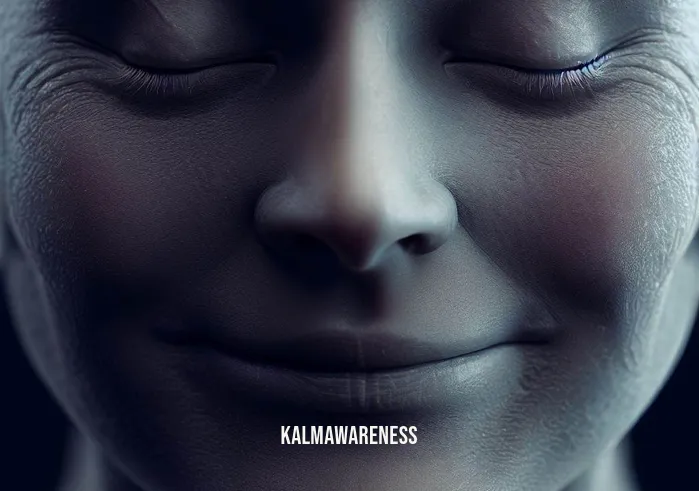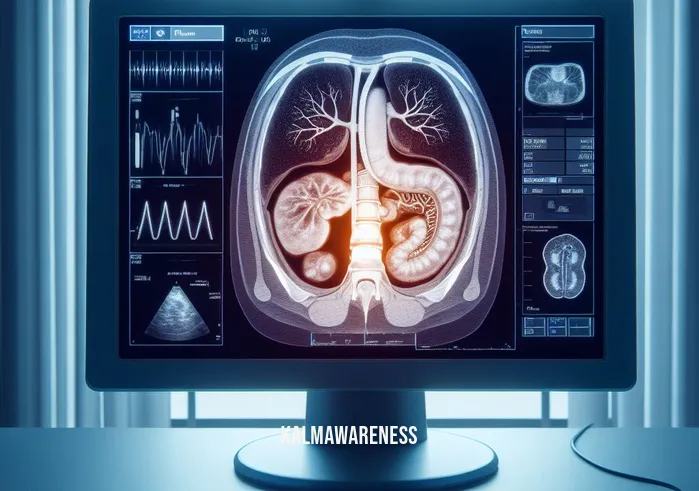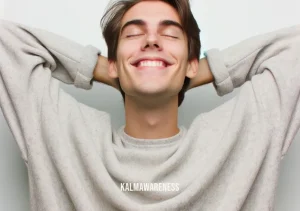The Art of Stillness: Understanding Head Moving During Meditation
Meditation is a journey inwards, a voyage into the caverns of our mind and soul. Yet, for many, the physical act of sitting still becomes a monumental task, especially when it comes to the mysterious case of the head moving during meditation. Is it a distraction, or is there a deeper message our body is trying to convey?
Why Does Your Head Move During Meditation?
When delving into the realms of Mind-Wandering, the involuntary motion of the head can often be seen as a sign of distraction or lack of focus. Some argue that it’s the body’s natural way to adjust and find comfort, much like the ways we might find comfort in a desert – seemingly barren, yet teeming with life and potential.
Others believe that head movements could be a result of the body’s active lumbar trying to find an optimal position, which resonates with the teachings on the importance of a straight spine during meditation.
Embracing the Motion
“In stillness, we find movement. In movement, we find stillness.”
Understanding the fine balance between Body Awareness and movement can be likened to the gentle touch on a body part. The key isn’t to resist the motion but to become acutely aware of it. The idea is not to control but to observe. When our heads move, it can be an invitation to occupy ourselves more deeply with the present moment.
The Role of Posture
When sitting in meditation, especially on tools like a zafu, it’s imperative to acknowledge the role of posture. The gassho meditation exemplifies this by emphasizing the significance of the posture of our hands. Similarly, realizing the importance of our head position is vital.
It’s not just about physical alignment, though. Our posture reflects our inner state. The next time you find your head moving, ask yourself – is it a reflection of the anguish within or a simple need to adjust?
Mindful Breathing: The Anchor
Breathing can be our anchor, the constant in the ever-shifting sands of meditation. Finding your breath is essential, not just to anchor the mind but also the body. When engaged in mindful motion pilates, for instance, breathing takes the center stage, syncing every movement with the ebb and flow of the breath.
A technique like the 5-minute silence can be enhanced when we consciously combine it with breathing, allowing even the slightest head movement to flow with the rhythm of our breath.
What’s Next?
I invite you to continue to the next part of the article, where we’ll explore more about the nuances of head movement, its connection with Distraction, and the role of awareness in bringing about Stillness. Techniques such as the 54321 anxiety trick and practices that use the tongue on the roof of the mouth will be delved into to give you a holistic view of managing head movements during your meditation sessions.
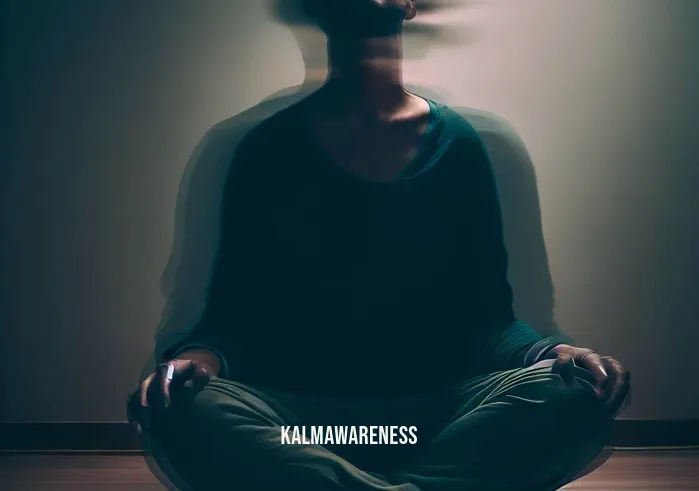
The Layers Behind Head Movement in Meditation: Delving Deeper
When discussing the phenomenon of head moving during meditation, it’s critical to dive deeper and uncover the multitude of reasons and impacts behind it. In this chapter, we’ll branch into new avenues, exploring the neurological, psychological, and spiritual layers of this seemingly simple movement.
Neurological Aspects
When meditating, our brainwaves change. There’s a shift from the everyday beta wave state to the more relaxed alpha, and, for deep meditators, even the theta state. These brainwave changes could influence involuntary muscle movements, including in the head and neck.
Beta Waves: These are our day-to-day brainwaves, associated with logic and waking state. It’s possible that if you’re not fully relaxed during meditation, and your brain is still predominantly in this state, distractions might manifest physically as head movement.
Alpha Waves: The realm of resting meditation. When we enter this state, we’re in the domain of relaxed alertness. It’s a threshold where physical sensations become pronounced.
Theta Waves: Deep meditation. In this state, the line between the conscious and the subconscious blurs. It could be that the head movements correspond to subconscious processing.
Psychological Insights
The mind is a powerful entity, often manifesting its turmoil or tranquility in physical ways. Let’s understand this better:
Reflection of Inner State: Just as a guy meditating might show signs of restlessness if he’s mentally agitated, head movements can be a mirror to our inner psychological state.
Sensory Processing: The Elisha Goldstein body scan method emphasizes on keenly observing our physical sensations. If during meditation, the mind is processing a sensation, it might be reflected as a twitch or movement.
Mind’s Distractions: Often our mind’s way of distracting us from deep introspection is to focus on physical sensations, including the urge to move our heads.
Spiritual Dimensions
On a spiritual plane, movements during meditation might be seen as energy adjustments. Here’s how:
Energy Flow: Eastern philosophies often discuss the flow of chi or prana (life energy) in the body. An obstruction or surge in this flow could lead to involuntary movements.
Kundalini Awakening: Some spiritual practitioners believe that involuntary movements, including head sways, could be signs of Kundalini energy rising through the spine. It’s a deeply transformative process.
Head Moving During Meditation: A Comparative View
| Cause | Likely Manifestation | Remedial Action |
|---|---|---|
| Beta Brainwave State | Twitchy, restless movements | Deepen relaxation; try 5 minutes of silence. |
| Sensory Processing | Movement when a sensation is noticed | Practice mindful motion pilates. |
| Energy Blockage | Sudden, jerky movements | Seek energy healing or chakra balancing. |
| Kundalini Activation | Intense, possibly whole-body movement | Consult a spiritual guide. |
| Mind’s Distractions | Movements when a deep insight is nearing | Use techniques like tongue on the roof of the mouth meditation. |
What’s Ahead?
Having dived into the deeper layers behind head moving during meditation, our next chapter will focus on practical solutions. We will discuss how to stabilize these movements and harmonize them with your meditation practice, ensuring a seamless blend of body and mind. We’ll also shed light on postures and techniques, like how to sit on a zafu, that can aid in creating an environment conducive for stillness. Stay tuned!
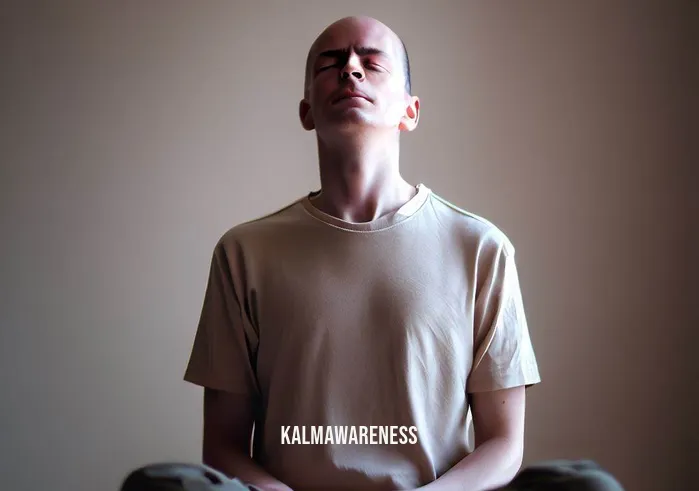
Taming the Dance: Harmonizing Head Moving During Meditation
As we continue our introspective journey into the phenomenon of the head moving during meditation, it’s essential to acknowledge and accept the movement. We have unearthed its possible causes; now it’s time to harmonize with this rhythm, channeling the energy towards a more profound meditative experience.
Albert Einstein once said, “Life is like riding a bicycle. To keep your balance, you must keep moving.” Similar is the sentiment behind head movement during meditation. It’s not about stifling the motion but rather about finding balance amidst it.
Harnessing the Movement: A Dance of Stillness
Understanding its Purpose: Before attempting to harmonize with the movement, we need to accept and understand its purpose. As previously discussed, these involuntary motions might be a result of various neurological, psychological, or spiritual factors. Understanding its root can lead to a deeper connection with the self during meditation sessions.
“The real voyage of discovery consists not in seeking new landscapes, but in having new eyes.” – Marcel Proust
This echoes our perspective on head movements. Instead of viewing them as disturbances, seeing them with “new eyes” can transform the experience.
Guided Sessions: Sometimes, the best way to handle distractions, including head moving, is to opt for guided meditation. These sessions provide a narrative to focus on, channeling any restless energy towards the narrative.
“In the middle of every difficulty lies opportunity.” – Albert Einstein
View the movement as an opportunity, not a hindrance. A chance to explore deeper realms of your consciousness.
Breathing Techniques to Stabilize the Mind and Body
A deep dive into finding your breath can offer solace to the wandering mind. The simple act of focusing on your breathing can bring about a profound stillness, anchoring the restless mind and body.
The 54321 Technique: This anxiety trick focuses on grounding exercises and can be paired with breathing exercises. The act of grounding can, in many instances, help stabilize involuntary movements during meditation.
“Act as if what you do makes a difference. It does.” – William James
Each breath, each moment of focus, every acknowledgment of movement makes a difference in your meditative journey.
Embracing the Present Moment
The essence of meditation lies in embracing the present, and that includes any head movements that come our way. Techniques like resting meditation are a testament to this, teaching us the value of simply being.
“Do not dwell in the past, do not dream of the future, concentrate the mind on the present moment.” – Buddha
Just as we don’t cling to a thought during meditation, we shouldn’t cling to or resist head movements. Instead, recognize, accept, and move deeper into the meditative state.
A Touch of Mindfulness: Incorporating techniques that emphasize body awareness, like the Elisha Goldstein body scan, can serve as a reminder to be present. By focusing on each part of the body, we can become more attuned to its motions and the sensations that arise.
“The best way to capture moments is to pay attention. This is how we cultivate mindfulness.” – Jon Kabat-Zinn
By paying attention, we capture the essence of each movement, transforming it from a distraction to an integrated part of the meditation process.
Journeying Ahead
Our exploration into the head moving during meditation has been enlightening. As we progress to the next chapter, we’ll focus on crafting a personalized meditation routine that acknowledges and integrates these movements. We’ll delve into various postures, meditation tools like how to sit on a zafu, and other strategies that can enhance your practice. Join us on this continuous voyage of self-discovery.
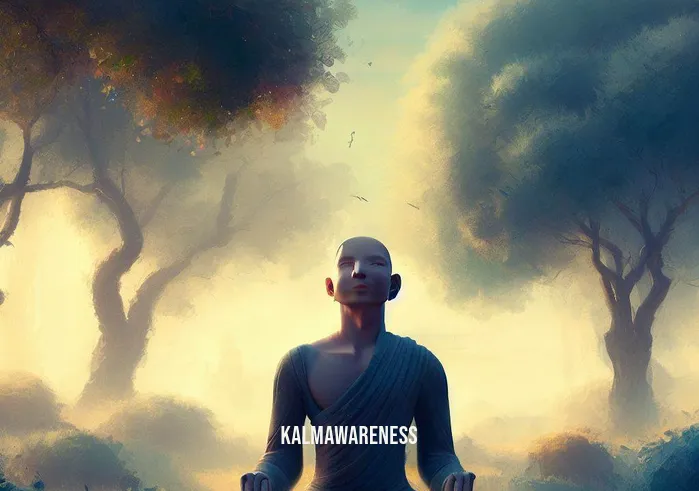
Crafting a Personalized Routine: Beyond Head Moving During Meditation
As our exploration of head moving during meditation deepens, it becomes apparent that a holistic approach to the practice can alleviate some of these physical distractions. Here, we’ll chart a roadmap, listing practices and techniques that can be personalized, ensuring an enriching meditation journey even when faced with the challenge of involuntary head movements.
Why Personalization Matters
Unique Physiology: Just as our thumbprints are distinctive, our physical responses during meditation, like head movement, are unique. Adopting a one-size-fits-all approach may not be the solution.
Mental State: Our emotional and mental states play a pivotal role in our physical responses. Recognizing this, and tailoring our meditation routine, can yield positive outcomes.
Evolution of Practice: Over time, as we grow and change, so too will our meditation practices. Personalizing ensures that the practice remains relevant and beneficial.
Personalizing Based on Body Awareness
Mindful Motion with Pilates: Marrying meditation with physical movement can offer a holistic solution. Delving into mindful motion pilates, for instance, can provide the body with a channel to utilize its energy, possibly reducing involuntary movements like the head swaying during meditation.
Understanding our Bodies: Being in tune with our bodies and understanding its responses is key. Insights from articles like our body’s inner workings can empower individuals to make informed decisions about their meditation practices.
Techniques and Postures to Experiment With
Gassho Meditation: A practice like gassho meditation emphasizes bringing two hands together in a prayer-like gesture, which could help ground and center the practitioner, diverting energy from head movements.
Occupying Yourself: Sometimes, giving the hands or body a specific task, like techniques outlined in occupy yourself, can balance the body’s energy.
Importance of a Straight Spine: While some movement is natural, ensuring a straight spine during meditation is essential for energy flow. Adjusting posture can sometimes mitigate other involuntary movements.
Exploring Chair Meditation: Not all meditation needs to be on the floor. The focus side chair meditation approach offers an alternative that might just be the right fit for some.
Tools to Enhance the Meditation Experience
Active Lumbar Chair: Incorporating tools like the true wellness active lumbar chair can provide the necessary support, ensuring comfort and reduced distractions during the practice.
Breathing Enhancements: Techniques like the one where you explore if putting your hands above your head helps you breathe can be integrated into the routine to find what aids concentration.
The Journey Continues
Meditation is a continuous journey of discovery and refinement. As we move forward, understanding, accepting, and personalizing based on involuntary head movements can only enhance the experience. As the age-old adage goes, it’s not about the destination, but the journey.
In the next chapter, we will dive deeper into the realm of mindful habits, ensuring that our practices outside of meditation sessions support and enhance our experiences during them. Continue with us as we explore this symbiotic relationship further.
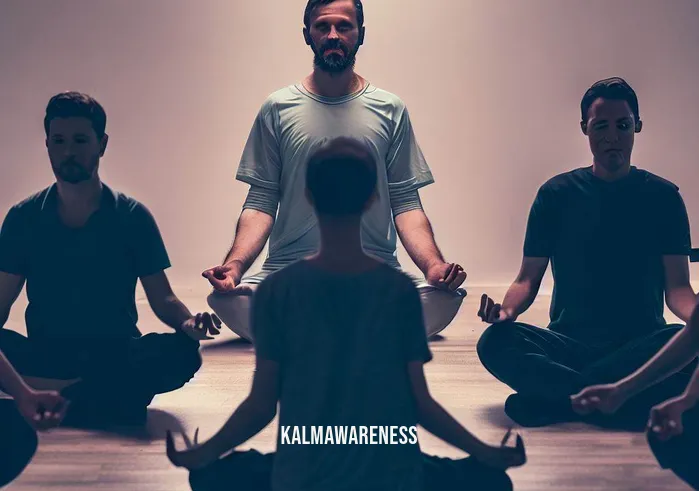
Embracing the Rhythms: Navigating the Ebb and Flow of Head Moving During Meditation
The journey through the vast seas of meditation is as unique as each wave. In the end, it’s about embracing the rhythms, understanding the ebb and flow, and finding a harmonious balance. As we close our exploration on the topic of head moving during meditation, let’s reflect on the serenity and wisdom that can be found in the gentle dance of our heads, and how this motion is a testament to our ever-evolving relationship with mindfulness.
The Beauty of Stillness Amidst Motion
Just as a leaf dances to the wind’s tune, our heads, too, might sway during meditation. But within this movement is a profound stillness. A beautiful article on desert meditation paints a vivid picture of this: the vast, motionless expanse of the desert, occasionally disrupted by the wind shifting sands. Like our heads, the desert is ever still, yet always in motion.
The Lessons from Movement
Every time our head sways or nods during meditation, there’s a message, a whisper from our inner selves. Perhaps it’s a nudge towards a deeper truth or a gentle reminder of something we’ve overlooked. In touching that body part, the act of connecting with different parts of our body during meditation, we learn to understand these subtle cues our body sends.
Mind-Wandering and Its Gifts
There’s a common misconception that mind-wandering during meditation is detrimental. Yet, our minds, like our heads, have their rhythms. Articles like 5 minutes of silence emphasize that moments of silence can often be punctuated by fleeting thoughts. But rather than resist, we can embrace and learn from them. After all, isn’t meditation about understanding ourselves better?
Invitations for Deeper Exploration
Even as we conclude this topic, the journey doesn’t end. There’s always room for deeper exploration. The tranquility achieved by a guy meditating in the midst of nature, or the peace in resting meditation, are all invitations for us to continue exploring and deepening our practice.
The Everlasting Embrace
In the dance of meditation, our head moving is but one of the partners. There are countless other elements — our breath, our thoughts, our feelings. And as with any dance, it’s not about perfect synchronization but about enjoying the dance itself.
As T.S. Eliot once wrote, “At the still point, there the dance is.” Even amidst the movement, there’s a still point, a center of gravity that holds everything together.
A Parting Note
It’s been an enlightening journey exploring head moving during meditation. As we conclude this chapter, remember that meditation is as much about the journey as the destination. Each swaying movement, each fleeting thought is a stepping stone to deeper understanding and serenity.
And as you continue on your path, always know that the world of KalmAwareness awaits with more insights, stories, and explorations. Embrace your unique dance, and may your meditation journey always be filled with light and understanding.
Until next time, be still in the dance.
